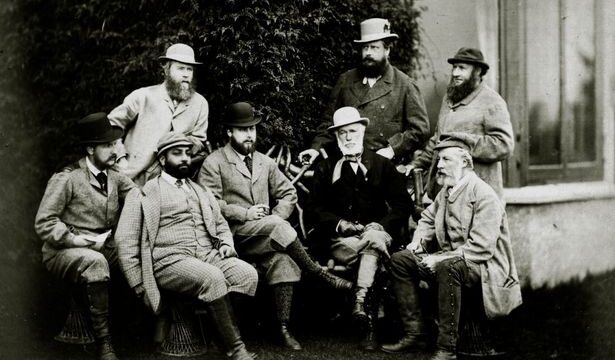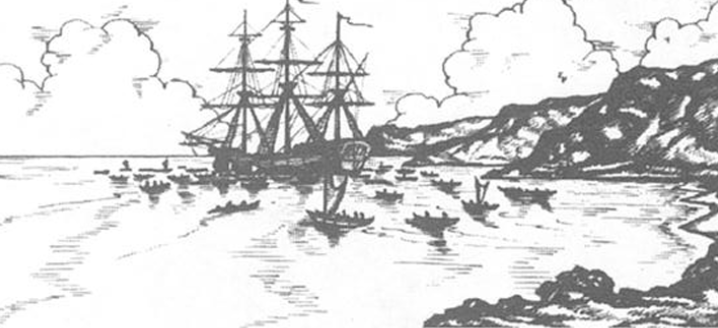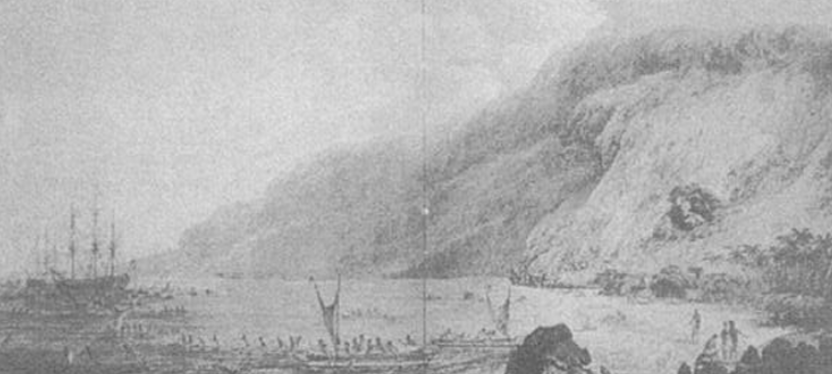By Abby Winterich-Knox, Safa Tonuzi, Chrissy Stamey, and Lucien Noël
Introduction
In the aftermath of colonialism, aboriginal communities in Australia have engaged in conflict with the Australian government on a multitude of battlegrounds, including the lives and safety of indigenous children. State control over indigenous communities has extended into the interpersonal relationships between family and child, manifesting in coercive social work policies that extract and displace indigenous children from their homes. Nationwide efforts to cease this systemic displacement have been working tirelessly to bring indigenous children back home, yet these programs’ hegemonic legacies continue to reverberate in contemporary aboriginal lives.
Indigenous History and the Stolen Generation
While there are similarities between the plight and lives of Indigenous people in Australia to those in North America, it is important to familiarize ourselves with the uniqueness of the Australian indigenous community. It is necessary to not conflate the Australian experience with the Indigenous experiences we already know, as they are each uniquely and differently situated. The Australian Indigenous populations are known as the Aboriginal and Torres Strait Islander people; this encompasses hundreds of groups, all with different languages and histories (Australian Institute of Health and Welfare, 2021). Australia was colonized by Britain in 1788, negatively impacting the Indigenous populations immediately: epidemic disease was spread and Aboriginal and Torres Strait Islanders were forcibly moved to ‘reserves.’ The Indigenous population went from an estimated 320,000 at the time of colonization to 80,000 by the 1930s (2021).
Part of this decline is due to what is known as the Stolen Generation. From the early 1900s into the 1970s, discriminatory policies were aimed at forcing Aboriginal and Torres Strait Islander people to abandon their culture, language, and histories (Haebich, 2011). This went as far as governments and churches forcing Aboriginal and Torres Strait Islander children from their homes. These children became known as the Stolen Generation. (Australia Together). This was a part of the government’s assimilation policy, which was based on the principle that their lives “would be improved if they became part of white society” (Australia Together). The survivors of the Stolen Generation are associated with higher rates of depression, PTSD, suicide, and worse health and economic outcomes than both other Indigenous and Non-Indigenous Australians (Australia Together). While the Australian government is not taking Indigenous children from their homes anymore, there is still a pushing of Indigenous erasure from Australian history and culture, which is necessary to confront (Haebich, 2011).
Over-representation of Indigenous Children in Australia’s Welfare System
Only 5% of Australia’s young demographic consists of indigenous children, yet indigenous children make up 42% of the children placed in out-of-home care (Bridges, 2023).
The overwhelming numbers of indigenous children enrolled in the Australian welfare system directly results from deliberate efforts made by the Australian state to assimilate and strip indigenous people from their authentic culture. Up until the 1960s, indigenous people of Australia faced segregation, removal from family, and placement into schools that served the purpose of assimilating the next generations of Aboriginal and Torres Strait peoples. This generation of indigenous people have been referred to as the “stolen generation” (Tilbury, 2008). Although explicit oppression ended in the 1960s, the over-representation of indigenous children in the Australian welfare system demonstrates the lasting effects
In a study conducted in 2008, Clare Tilbury found that indigenous children were three times more likely than to be notified or reported to child protection authorities compared to their non-indigenous counterparts. The source of over-representation stems from the nature of the intervention used by Australian authorities’ hegemonic efforts. Even more findings revealed that indigenous children were found to be victims of abuse and neglect by their own family members.
Although the Child Placement Principle aims to place the children in homes of their extended family, there is no guarantee and the regulation does not strictly adhere to guidelines, and often the principle is not even followed. Instead of choosing to invest in indigenous communities, the government permeates the vilified approach of indigenous communities. In these communities, Australian constitutional powers have withheld security payments from parents, increased policing and deployed arm services, prohibited the ownership and purchasing of alcohol, and controlled governance in certain areas.
Much like the United States and how marginalized communities are treated, abuse and neglect become a cyclical process. Building off this cyclical process, we can think about the master-slave dialectic and apply it to what is happening in Australian indigenous communities. The Australian government indoctrinated the “stolen generation” into believing that they were uncivil and violent humans, and therefore, certain indigenous people have this false sense of association with violence amongst as a part of their culture–almost as if it is the norm. This generational trauma has manifested as unstable home life that creates this over-representation of indigenous children in Australia’s welfare system.
Care Theory and (Post)Colonial Social Work
Aboriginal children’s systemic rehousing operates within a framework of state-organized care as a mode of colonial violence. Scholars of care generally conduct their work within the medical and public health fields, yet the lenses used to interpret care policy can transfer onto the experiences of those oppressed within postcolonial structures, like the Australian child welfare system. When removed from their family and community, aboriginal children are severed from their care systems under a form of colonialism often referred to as maternal colonialism. This concept depends upon a maternalistic, hegemonic ideology to “invade into the most intimate spaces and relationships of indigenous people’s lives” (Jacobs, 2005). Colonial social work policy breaks apart the “unsafe” indigenous family for the “good” of the indigenous child, which reflects an ideology rooted in the refusal to recognize the indigenous family’s structure or history as a legitimate form of being (“Bringing them Home,” 1997).
Similar studies of failed social work projects in indigenous communities find a refusal from the state to meet indigenous communities where they are, and instead continually coerce these communities towards a developmental standard the government holds (Stevenson, 2014). The expectation of progress–and refusal to recognize the nature of postcolonial indigenous existence–inherently severs the ability for care to occur. The consequence is state intervention without comprehension, and a dissonance between indigenous and white Australia exacerbated by the generational trauma of forced removals.
Indigenous Children in Out of Home Care: Implications of the Stolen Generations
A recursive analysis of Australian Indigenous children’s over-representation in out of home care and juvenile detention centers indicates that the implications of the Stolen Generations remain ever-present in the lived realities of their families and their communities. The rate at which Indigenous children are being removed from their families by child protection agencies has in fact increased to higher than any time during the last century. A Report from the Productivity Commission shows that in June 1997 there were 2,785 Indigenous children in out of home care (Gibson, 2013). By June 2020, 18,900 Indigenous children were recorded, 11 times the rate for non-Indigenous children (Australian Institute of Family Studies, 2020). Furthermore, according to a repeat offender “blacklist” acquired by the Guardian (Smee, 2023), more than 95% of the children actively being monitored by police and youth justice authorities in north Queensland are Indigenous, indicating a lack of federal incentive to decrease the rates at which Indigenous children are removed from their families.
Whilst many of these children grow up in fractured communities that expose them to child abuse, domestic and family violence, and alcoholism, dominant colonially-embedded narratives frame Indigenous peoples as perpetrators of their own poverty, violence, and trauma. As such, many federal policies and state interventions continue to replicate colonial dynamics whilst exacerbating the conditions of child abuse and domestic violence they aim at addressing (Funston et al., 2016, p.57). These policies often fail to consider the racialised nature of intergenerational trauma prevalent within Indigenous communities and the colonial origins of the poverty, family violence, and despair that continues to implicate such trauma. Instead, policies are often focused on increasing restrictions and the policing of Indigenous communities (Smee, 2023).
Conclusion
Embracing the ongoing recursion of history assists in understanding historical experiences such as the Stolen Generations as moments not isolated in time with clear beginnings and ends, but culminations of moments that continually affect the lived realities and conditions of people in the present. Although these understandings should inform a different focus in child protection grounded in ongoing consultations with Indigenous communities and increasing community resources, Indigenous children continue to be removed and placed within out of home care, often leading to early entry into the juvenile youth system which exposes them to greater risks of physical, sexual, and emotional harm (Funston et al., 2016, p.52, 56). Such implications not only perpetuate but deepen the open wound that is the intergenerational trauma of the Stolen Generations whilst making it increasingly difficult for Indigenous children to make meaningful connections with their Indigenous cultural heritage and its unique ways of doing, being, and knowing.
Bibliography
Australian Human Rights Commission (1997). Bringing them home: the ‘stolen children’ report.
Retrieved April 2, 2023, from
Australian Institute of Family Studies (2020) Child protection and aboriginal and Torres Strait Islander Children. Retrieved April 1, 2023, from https://aifs.gov.au/resources/policy-and-practice-papers/child-protection-and-aboriginal-and-torres-strait-islander#:~:text=At%2030%20June%202018%2C%2017%2C787,children%2C%20at%205.2%20per%201%2C000.
Australian Institute of Health and Welfare. (2021). Profile of Indigenous Australians. Retrieved
from https://www.aihw.gov.au/reports/australias-welfare/profile-of-indigenous-australians
Alicia, B. (2023, April 1). Life Without Barriers will transfer responsibility of fostered Aboriginal children to Indigenous-led services. Australian Broadcasting Corporation. https://www.abc.net.au/news/2023-04-02/indigenous-led-foster-care-transfer-life-without-barriers/102164134
Funston, L., Herring, S., & ACMAG. (2016). When Will the Stolen Generations End? A Qualitative Critical Exploration of Contemporary ‘Child Protection’ Practices in Aboriginal and Torres Strait Islander Communities. Sexual Abuse in Australia and New Zealand, 7(1), 51-58. doi:https://doi.org/10.1080/02615479.2022.2155129
Gibson, P. (2013, June 11). We have to stop the creation of another stolen generation. Retrieved April 1, 2023, from https://www.theguardian.com/commentisfree/2013/jun/12/stolen-generation-aboriginal-children
Haebich, A. (2011). Forgetting Indigenous histories: Cases from the history of Australia’s stolen
generations. Journal of Social History, 44(4), 1033-1046.
Jacobs, M. D. (2005). Maternal Colonialism: White Women and Indigenous Child Removal in
the American West and Australia, 1880-1940. The Western Historical Quarterly, 36(4), 453–476. https://doi.org/10.2307/25443236
Smee, B. (2023, March 17). More than 95% of North Queensland children on Internal Police ‘blacklist’ are Indigenous. Retrieved April 2, 2023, from https://www.theguardian.com/australia-news/2023/mar/18/more-than-95-of-north-queensland-children-on-internal-police-blacklist-are-indigenous
Stevenson, L. (2014). Life beside itself: Imagining care in the Canadian Arctic. University of
California Press.
The stolen generation. Australians Together. (n.d.).
https://australianstogether.org.au/discover-and-learn/our-history/stolen-generations/
Tilbury, C. (2008). The over-representation of indigenous children in the Australian child welfare system. INTERNATIONAL J O U R N A L O F SOCIAL WELFARE, 18, 57–64.










